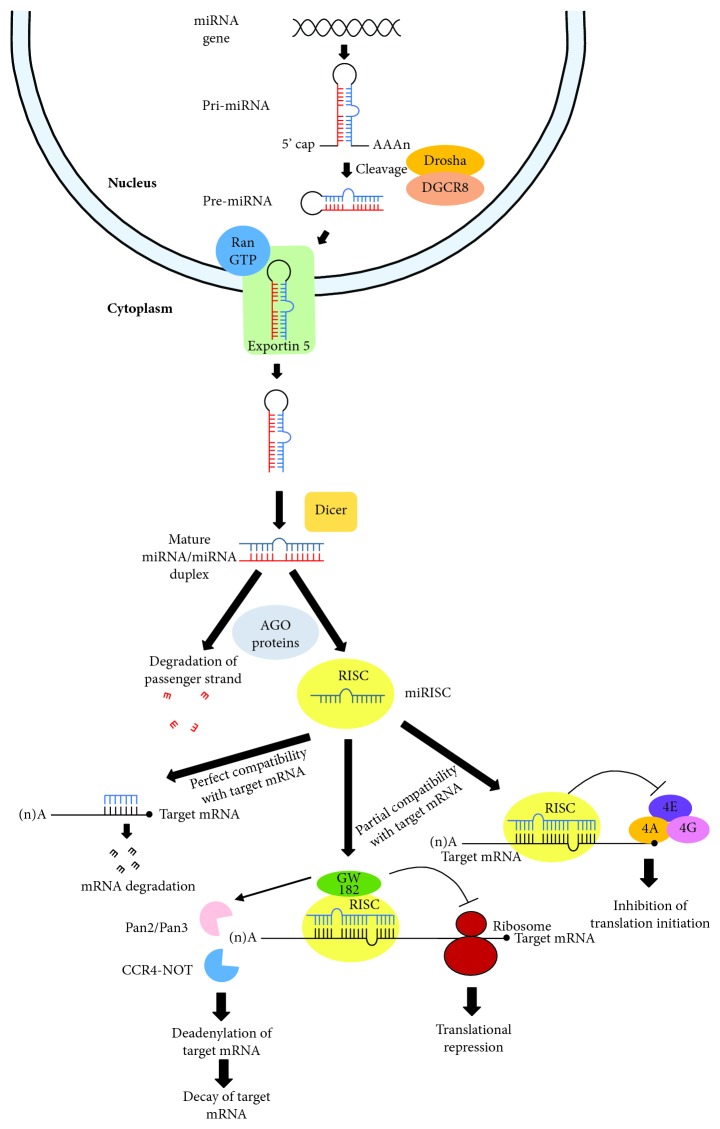Figure 1.
Canonical pathway for miRNA biogenesis. Transcription of miRNA genes results in the formation of primary miRNA (pri-miRNA). Cleavage of pri-miRNA by the Drosha-DiGeorge Syndrome Critical Region 8 (Drosha-DGCR8) complex produces precursor miRNA (pre-miRNA). Pre-miRNAs are then transported from the nucleus to the cytoplasm by the exportin 5/RanGTP transport complex followed by terminal loop cleavage by endoribonuclease Dicer to produce mature miRNA/miRNA duplex. Red and blue strands in mature miRNA/miRNA duplex represent passenger and guide strands, respectively. The duplex is loaded into the Argonaute (AGO) family of proteins, and the passenger strand of the duplex is degraded while the guide strand is retained, forming the miRNA-induced silencing complex (miRISC). The guide strand directs miRISC to target mRNAs, resulting in mRNA degradation and/or translational repression. miRISC directly cleaves target mRNA with perfect compatibility with miRNA. For mRNA with a partial complementary target site, miRISC suppresses its translation initiation by disturbing the formation of eukaryotic translation initiation factor 4F (eIF4F), a multiprotein complex composed of eIF4E, eIF4G, and eIF4A subunits. Besides, GW182 proteins which are recruited to the miRISC cause translational repression and deadenylation of target mRNAs by the recruitment of the CCR4-NOT and Pan2/Pan3 deadenylase complexes.

